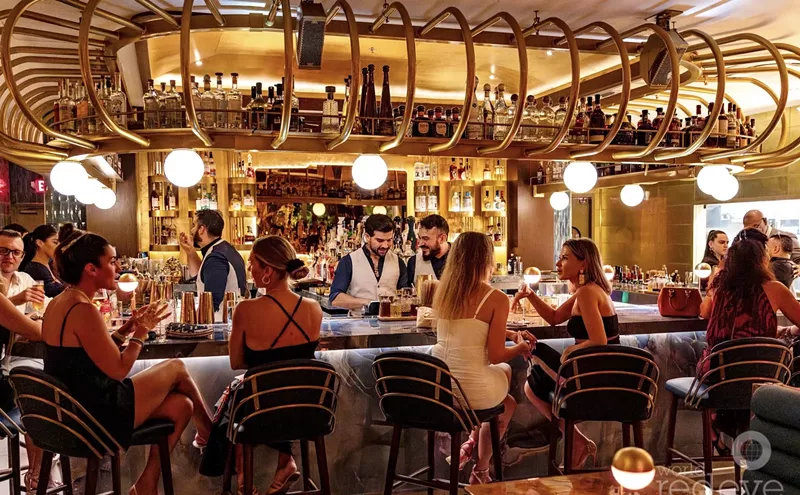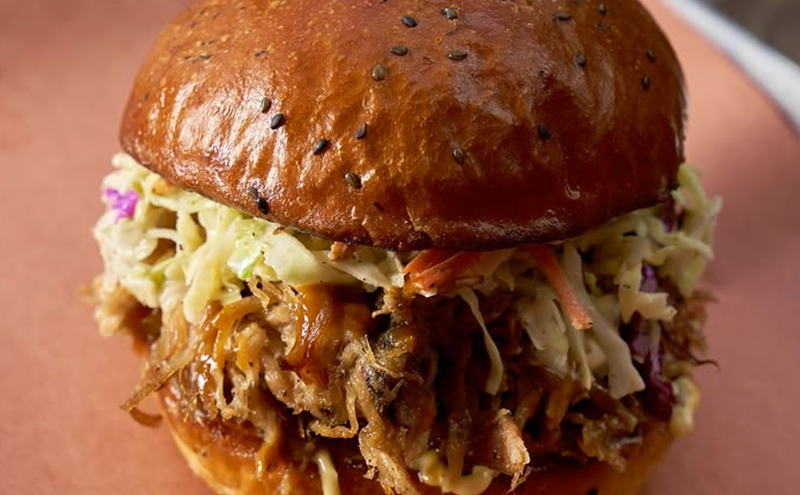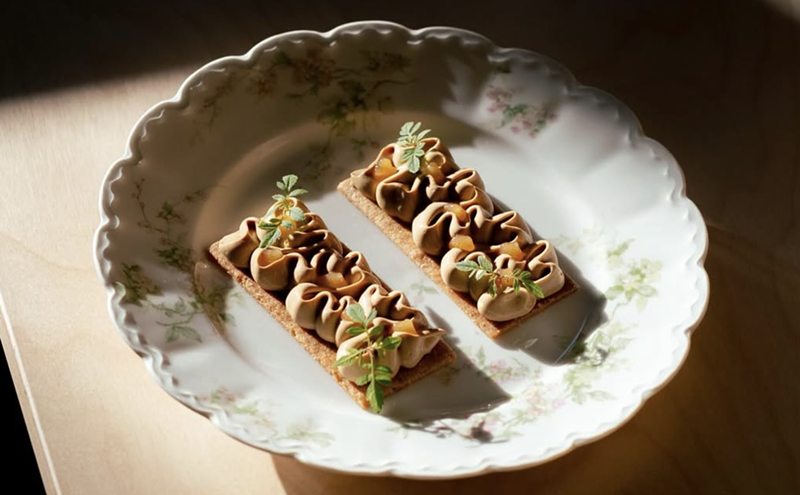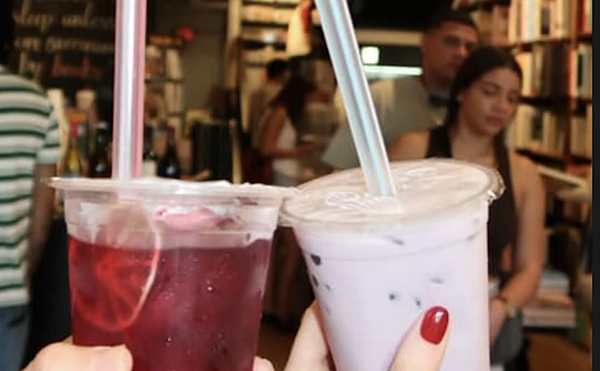Driving by half the Chinese joints without stopping is, frankly, a darn good idea, if you're looking for the sort of authentic Chinese food so easy to find in San Francisco, or even the much smaller Chinatown in Seattle. If your yen is for Chinese-American dishes (either totally American inventions like chop suey and egg rolls, or originally Chinese dishes like delicate mah gu gai pin, which most American Chinese restaurants westernize into gloppy "moo goo gai pan"), the best bet is China Restaurant. Breaded almond duck was at least tasty junk food, despite its typically Chinese-American overthickened sauce and an abundance of processed vegetables including, unforgivably, canned button mushrooms. "Chinese food in China all fresh!" our friendly Cantonese server chuckled amiably. "Here everything frozen."
The infuriating absence of almost any of the fresh Asian produce so abundant in all of the thoroughfare's four markets was also evident at Sion Hee, where all other customers appeared to be Latin American. But pollo tamarindo, which by definition should contain tamarind, was just regulation sweet-and-sour chicken, not the more subtly fruity Chifa specialty. And the "Chinese vegetables" in totally taste-free ho yu gai poo, listed as a chef's special, consisted of bok choy, plus exactly two snow pea pods to justify the plural. The two other ingredients in the dish's mucilaginous sauce, roast pork and chicken, were dry as dust, and the chicken's "thin batter," scraped off, was a soggy, undercooked white layer almost a half-inch thick.
At King Buffet, prices for the all-you-can-eat spread are astonishingly cheap ($5.99 to $6.95 for lunch, $8.95 to $10.99 for dinner), and you get what you pay for. Quantity was perhaps an eighth of the advertised "100 items daily," and quality was about equal to an airport Chinese fast-food kiosk. (Don't confuse this steam-table palace with King Palace next door, a completely unrelated Chinese joint that's my favorite in the neighborhood.) The dumpy dining room was as packed with almost entirely Asian patrons as it was when we reviewed it in-depth last year (see the July 14, 2005 issue), and the authentic Chinatown barbecue hanging in front was just as succulent. The only difference: a new sign outside touting the previously unadvertised fresh seafood from their live tanks, the best-stocked on the street (lobsters, crabs, tilapia, and goby perch, on this visit). Lobster with ginger and green onions, and whole fish with hot bean sauce were especially good.
Bamboo Garden (which has the street's nicest décor) and Jumbo, almost adjoining and both dating from the Eighties, have more limited live tanks. Dishes at both also had less zesty flavoring than King Palace's. Fried beef chow fun's addictive quality is the charming chewiness of its rice noodles; the Garden's were mushy and possessed little savor. And though garlic eggplant with sliced tender beef was a relatively authentic, though meat-heavy, rendition of the Cantonese home-cooking classic, the menu promised a hot Szechuan dish rather than something mild, even by subtler Cantonese standards.
Jumbo's salty shrimp with pepper featured perfectly cooked extra-large shellfish, but also lacked zing owing to substitution of red and green bell peppers for this item's customary chilies. Jumbo does use some unusual authentic Chinese produce in its dishes (most notably fresh bitter melon and mustard greens). But next time I would mainly stick to my usual, the dim sum, the place's specialty; crisp stuffed taro balls, polentalike turnip cakes with pork bits, and slippery rice noodle rolls filled with barbecue pork are especially satisfying. These small plates, a breakfast/lunch teahouse tradition in China, are served all day, though there's a surcharge after 3:00 p.m.
Sang's also serves dim sum but stops at 4:00 — on the dot. I arrived at 4:01 and couldn't score a single dumpling. Actually I had been to Sang's, opened by a former NYC Chinatown chef in 1990, once before; a lunch special of bland, gluey sauce-covered beef with broccoli, from a pink menu matching the tablecloths, was no incentive to return. The trick, which I discovered this time: Order only from the white menu of authentic Chinese dishes, or take the advice of the chef/owner's friendly wife, who translated the short list of specials (written in Chinese) on the wall. Salt-and-pepper shrimp were beautifully spiced. Crispy pork with crackling, from a barbecue counter installed a few years ago, was also wonderful. And its good deep-fried greasiness is easily countered with sautéed yu choy, bok choy's sweeter little sister — and something that will make you wonder why such interesting vegetables, which are so readily available in Miami's Asian markets, are nearly impossible to find in our Chinese restaurants.












